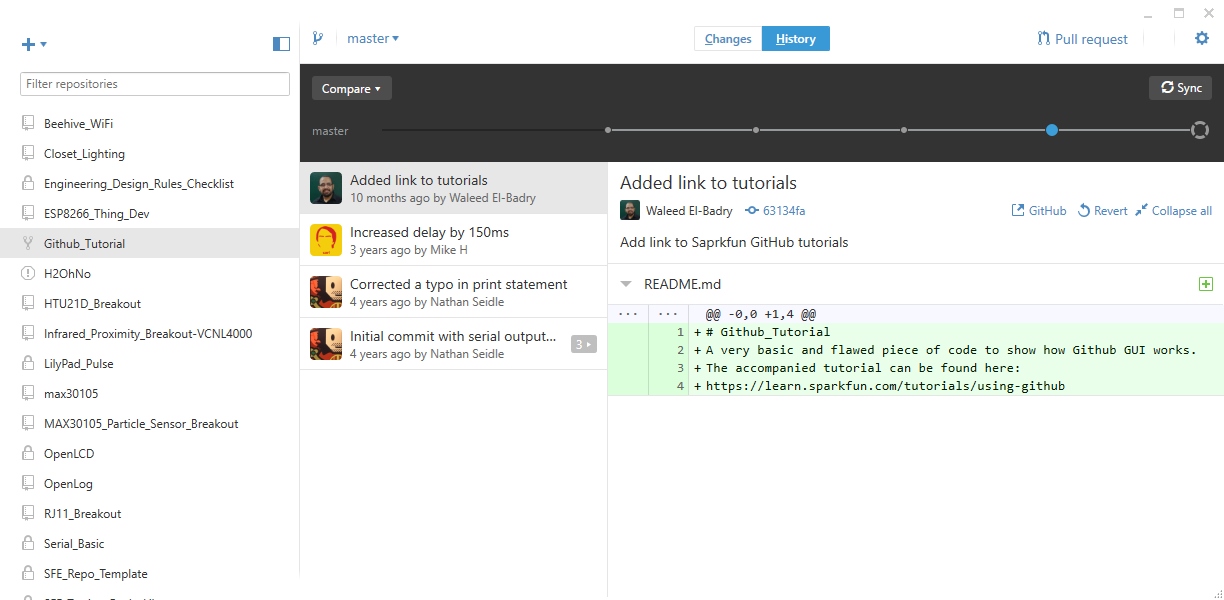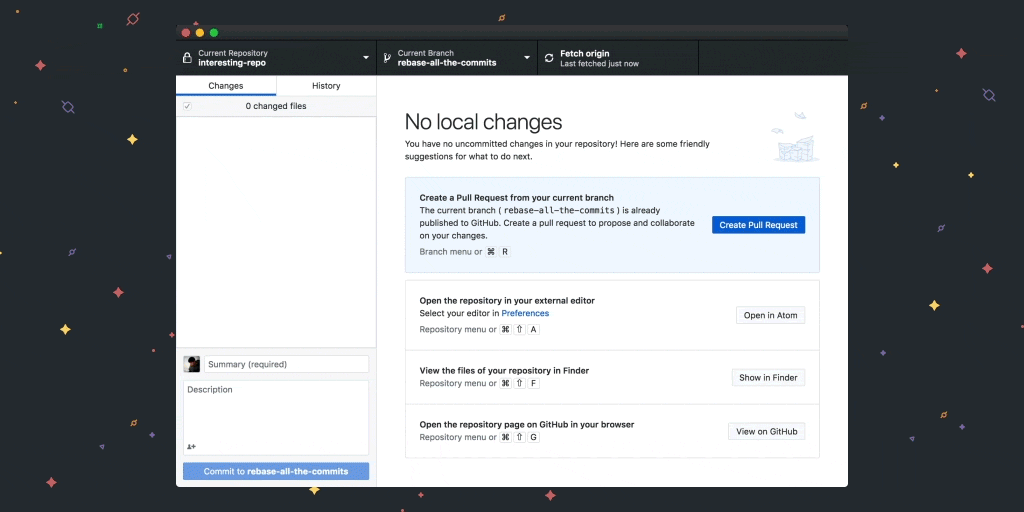
If you want to unstage only specific files, use the command git restore -staged
to mark conflict (s) as resolved and unstage all files in the staging area.
Github desktop stash changes mac#
Maybe I was just spoiled when magic stashing was around, but it was such an awesome git experience, and I will never work on Mac without it. Manually (or ideally using some merge tool, see below) resolve the conflict (s). This takes a long time if you have a lot of files you dont want to stash. It doesnt take a filename, but you could just skip other files with d until you reached the file you want stashed and the stash all changes in there with a. But when I tried the updated GitHub Desktop, it didn't have magic stashing, and didn't have any way to switch branches with work in progress without leaving the app to stash with the command line. You can interactively stash single lines with git stash -p (analogous to git add -p ). I found the next best thing on GitKraken, with stashing in the app, and a visual indication of when you have stashed work on a branch.
Github desktop stash changes windows#
No such (magic stashing) solution exists on Windows (that I have found). So I thought, if I get a GUI client, maybe it will have the neat branch switching behavior.

What if I forget that I had work in progress stashed on that branch? You have to manage it manually. When I had to use Windows at work, I started out using git in the command line, and was constantly annoyed with how you would have to stash before switching branches. This was my first git client (before even learning command line git), and it was just perfectly natural that switching branches would save your progress on the branch you were on before, and you could switch back to it later and all the work in progress would be there. I will not use the new app or use any other app unless this feature appears in them. I would still want to see option in preferences if you feel people are likely to always choose one or the other. What do you want to do?īuttons: Stash (as above) Carry over Cancel

Modal popup: You have uncommitted changes. make "Always stash when switching branches" an option you can set in preferences. Stash changes?īuttons: Stash (default button implemented if you hit Return stashes and switches to selected branch) Cancel: Returns you to the app.Įven better flow: Add checkbox Do not ask again


You can quite simply do git stash save on the branch where you have the changes, and then do git stash pop on the branch you want the changes to be in. Save Stashed Changes and Pop Them Into a Different Branch


 0 kommentar(er)
0 kommentar(er)
